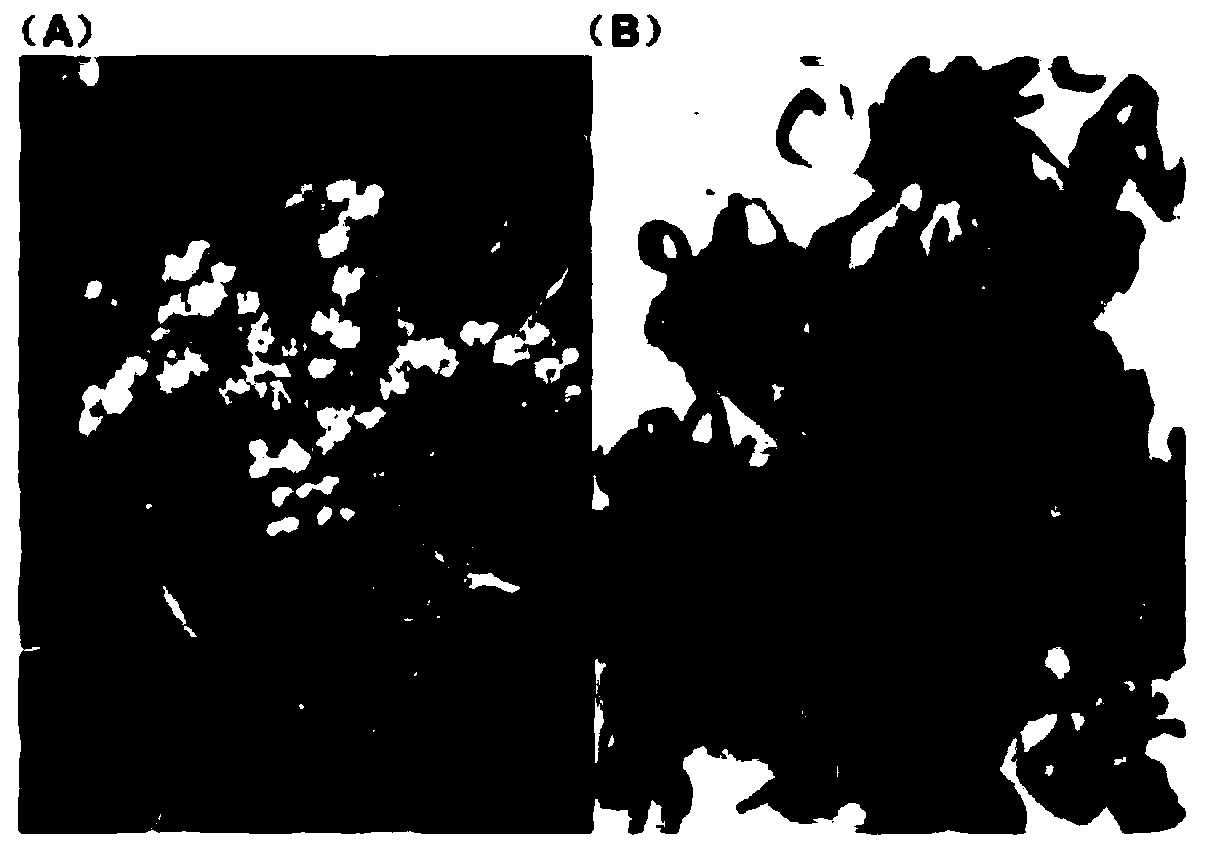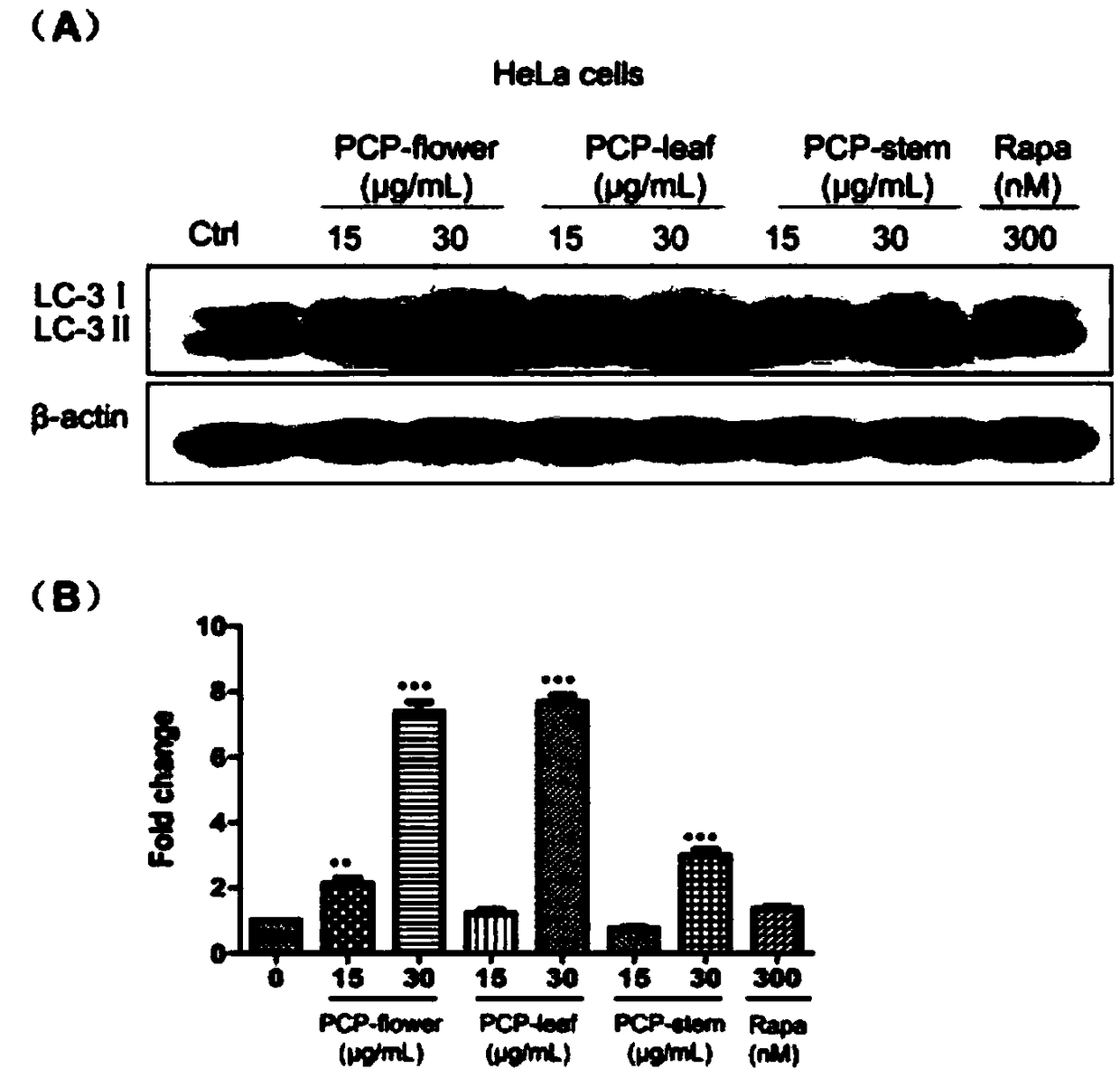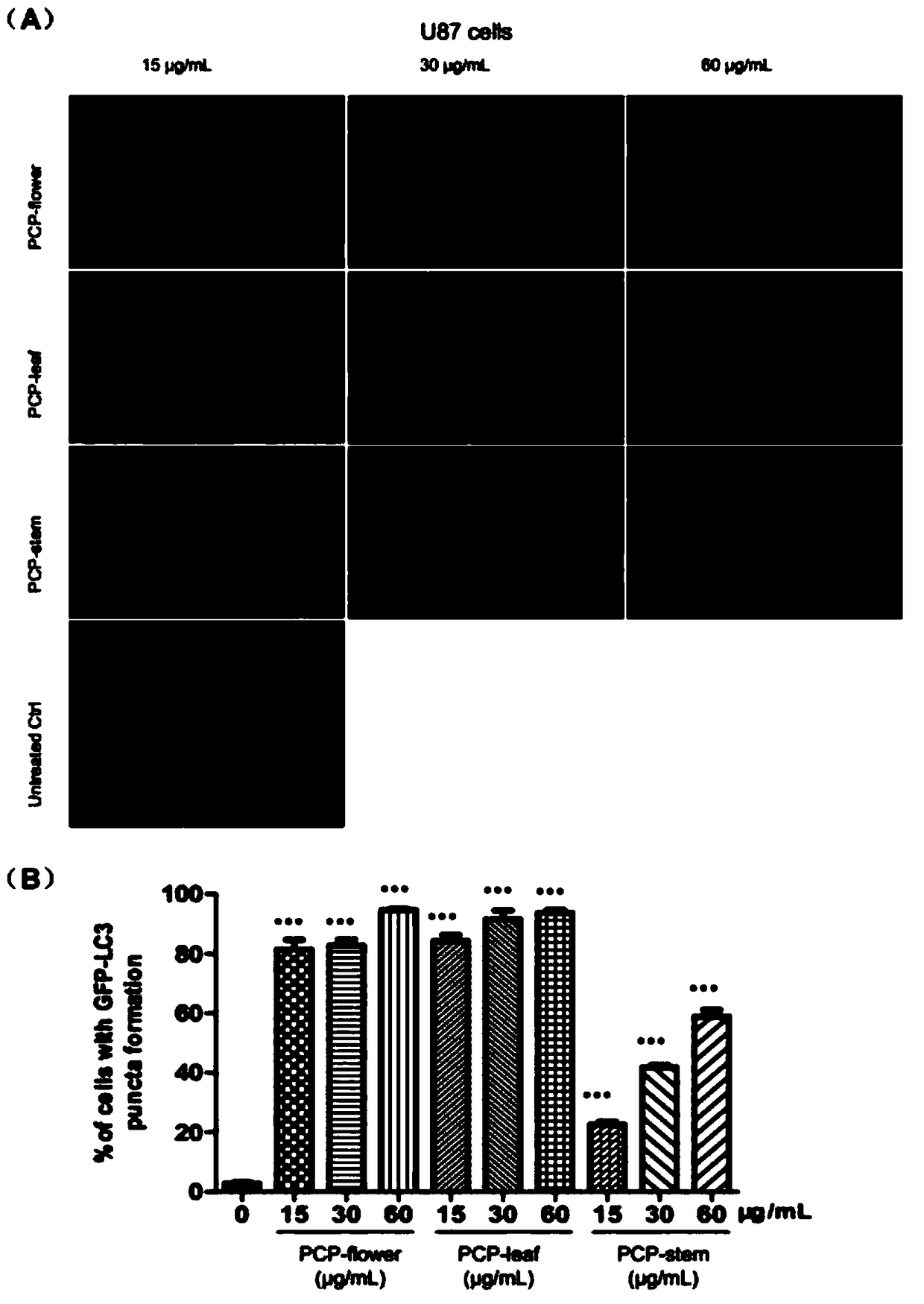Application of penthorum Chinense pursh and compounds thereof in preparing medicine for treating atherosclerosis and relieving Alzheimer disease
A technology for atherosclerosis and Alzheimer's disease, which is applied in the field of disease treatment or alleviation by the herb and its compounds, and can solve the problems of unexplored application potential and other problems.
- Summary
- Abstract
- Description
- Claims
- Application Information
AI Technical Summary
Problems solved by technology
Method used
Image
Examples
Embodiment 1
[0066] Example 1: Induction of autophagy by the total extract of C. chinensis
[0067] 1.1 Western blotting to detect the expression of autophagy-related proteins in Hela cells
[0068] Add 15-30 μg / mL drugs to the cultured Hela cells and incubate overnight: the extracts of the flowers of C. chinensis, the extracts of the leaves of C. sylvestris and the stems of C. sylvestris. Rapamycin (Rapa) was used as the autophagy positive control . After drug treatment, RIPA lysate (Cell Signaling Technologies Inc. Beverly, MA, USA) was added to each well at an amount of 70 μl / well to lyse HeLa cells, and Bradford reagent (Bio-Rad, Hercules, CA, USA) was used to measure protein concentration . Add an equal amount of protein to each well of the SDS-PAGE electrophoresis gel, electrophoresis at 300mA for 2 hours, and transfer the protein on the SDS-PAGE gel to the PVDF membrane. The PVDF membrane was blocked with 5% skimmed milk powder for 60 minutes and washed three times with TBST (1X)...
Embodiment 2
[0088] Example 2: Compounds TA, PG, TB, PG1 induce autophagy
[0089] 2.1 Determination of GFP-LC3 green fluorescent particles
[0090] The U87 cell line with GFP-LC3 stably transfected was transfected and established as in Example 1. After drug treatment, GFP-LC3 green fluorescent particles were detected.
[0091] 2.2 Western blotting
[0092] As described in Example 1, 4-8 μM compounds TA, PG, TB, and PG1 were used to treat HUVEC cells, the no-drug group was used as a blank control, and rapamycin (Rapa) was used as a positive control. After drug treatment, the HUVEC cells in each group were lysed by the method described above, SDS-PAGE protein electrophoresis, and the protein was transferred to PVDF membrane. After incubation with antibodies, ECL western blot detection solution (Invitrogen, Paisley, Scotland, UK) was used to expose and develop protein bands.
[0093] Result analysis: The autophagy activity of the above four compounds was analyzed by immunofluorescence tec...
Embodiment 3
[0132] Example 3: TA can reduce the level of oxidative stress in the aorta of the ApoE gene knockout atherosclerosis mouse model (ApoE-KO mice)
[0133] A 2-month-old ApoE gene knockout atherosclerosis mouse (ApoE-KO) model was established, and C57BL / 6J wild-type mice were used as the control group. Each group was given or not given intraperitoneal injection of TA (0.1mg / kg per day) for one month To evaluate the role of TA in the process of early aortic atherosclerosis in ApoE-KO knockout mice.
[0134] 3.1 Measurement of ROS in aortic vessels
[0135] 2',7'-dichlorofluorescin diacetate (2',7'-dichlorofluorescin diacetate, DCFH-DA) was used to measure the intracellular ROS content. Aortic vascular cells of ApoE-KO mice and C57BL / 6J mice were collected by Nylonsieve mesh combined with trypsin method. Add 10 μM DCFH-DA to the above cells, incubate at 37°C for 30 minutes, and then wash three times with serum-free medium. Intracellular esterase hydrolyzes DCFH-DA into DCFH so t...
PUM
 Login to View More
Login to View More Abstract
Description
Claims
Application Information
 Login to View More
Login to View More - R&D Engineer
- R&D Manager
- IP Professional
- Industry Leading Data Capabilities
- Powerful AI technology
- Patent DNA Extraction
Browse by: Latest US Patents, China's latest patents, Technical Efficacy Thesaurus, Application Domain, Technology Topic, Popular Technical Reports.
© 2024 PatSnap. All rights reserved.Legal|Privacy policy|Modern Slavery Act Transparency Statement|Sitemap|About US| Contact US: help@patsnap.com










